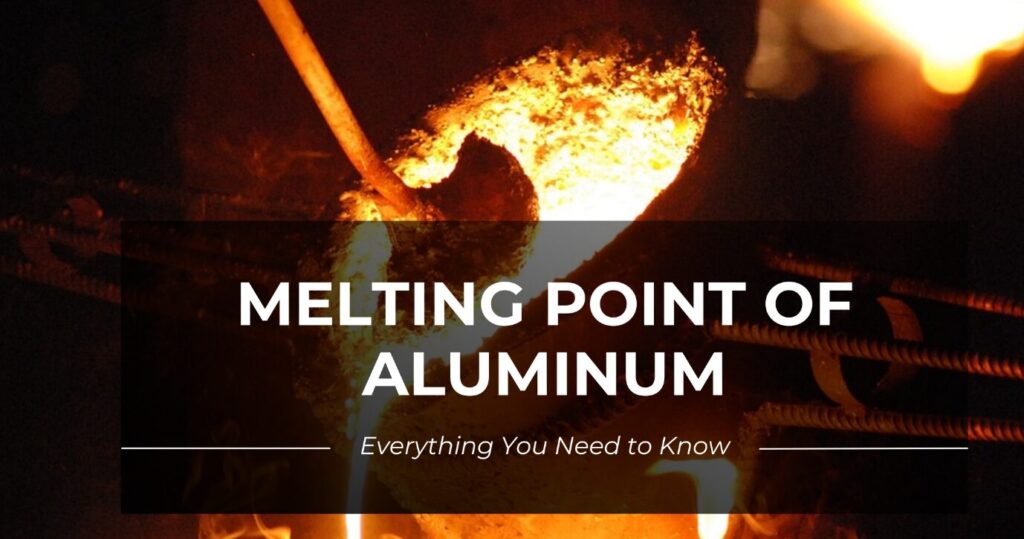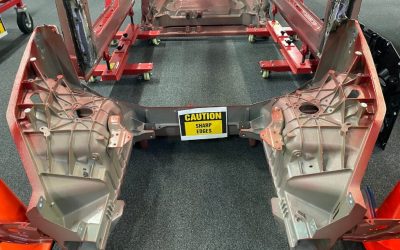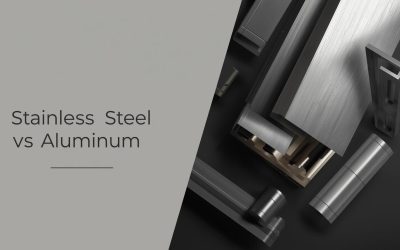私たちは毎日アルミニウムを使っている。車、家、工場、その他の場所で使われています。アルミニウムの人気の背景には多くの理由があります。最も重要な理由のひとつは、アルミニウムの重量に対する強度です。また、もう一つの重要な要素は、"アルミニウムの融点鋳造が必要なアルミ部品が多いので、その場合、何が必要かを知る必要がある。 アルミニウム合金の融点 そうすれば、溶けるオーブンの温度を適切に設定することができる。
アルミニウムは通常、SSやCSに比べて融点が低い。このため、加工や取り扱いが容易で、多くの産業で広く使用されている。もちろん軽量であることもアルミ合金の長所であり、自動車部品の多くにアルミ合金が使用されているのはそのためである。 アルミダイキャスト 製品である。
アルミニウムは腐食にも非常に強い。しかし、アルミニウムを扱う場合、考慮すべき重要なポイントがあります:アルミニウムの融点。アルミニウムの剛性と表面仕上げ。あなたのプロジェクトにアルミニウムやアルミ合金を使用する場合、これらのすべてが非常に重要です。 アルミニウム融点 に行くこともできる。 アルミダイカストの利点と欠点 をクリックすると、アルミニウム合金素材についてさらに詳しく知ることができます。
一般的にはね、 アルミニウムの溶解 温度 は摂氏660.32度である。ほとんどの加工や取り扱いの仕事は、この値に基づいて行われる。従来の加工には、溶接、鋳造、押出、熱処理などがある。エンジニアや製造業者が適切な温度を設定するには、この情報が不可欠です。ここでは、アルミニウムの融点を閾値として使用することができます。
アルミニウムの融点は、加熱からその他の作業まで、アルミニウム加工のすべての段階に関与します。保管、輸送、さらには使用する材料に関する問題にも影響します。アルミニウム合金の場合、この閾値はわずかに異なります。したがって、特定のプロジェクトに使用する材料としてアルミニウムを探す場合、次のことを知ることをお勧めします。 アルミニウムは何度で溶けるのか?
その他のハンドルは、アルミニウムの種類によって融け方が多少異なる。 温度 例えば、アルミニウム6061はアルミニウム7075とは融点が異なります。プロジェクトのためにアルミニウム材料を使用するときは、どのタイプのアルミニウムを使用する予定かを考える必要があります。 中国アルミダイカスト メーカー 18年以上アルミ合金に携わっている株式会社巴商会は、お客様のご要望に応じて適切なアルミ材料をご提案いたします。
この記事は、"WHAT'S THE WORLD "について書かれたものである。 アルミニウムの融点."主にアルミニウムの幅広い融点について説明します。また、この値にどのような要因が影響するのかを知ることができます。この記事は、様々な種類のアルミニウムとその融点について、より多くの情報を得るのに役立つと信じています。

アルミニウムの融点は?
について アルミニウムの融点 ここで液化が始まる。この時点で、素材は大きな変化を遂げる。容器の中でプロセスを観察すれば、その変化を見ることができます。融点では、アルミニウムは固体または硬い状態から液体状態に移行し始めます。
アルミニウムの場合、この変化はちょうど摂氏660.3度、華氏1220.54度で起こる。融解プロセスには通常3つの主な段階がある。第一に、アルミニウムは固体のままであり、摂氏660.32度以下のままである。次に、アルミニウムは摂氏660.32度の転移点に入ります。最後に、アルミニウムは摂氏660.32度以上になると液体に変わります。
これは単なる数字かもしれないが、多くの用途において極めて重要である。技術者にとっては、アルミニウムの取り扱い、加工、使用において信頼できる指針となります。ただし、この融点はアルミニウムの種類によって異なる場合があります。
一般的に、アルミニウムは商業用合金、二元合金、鋳造用合金の3つの主要なカテゴリーに分類することができます。

商業用合金シリーズ
商業用合金は、主要なアルミニウム等級です。日常的な用途に「最適」な選択肢です。建築、輸送、包装など幅広く使用されています。これらの合金は、アルミニウムとマグネシウムやケイ素のような様々な元素を組み合わせたものです。この混合の主な理由は、強度と耐食性を確保するためです。信頼性が高く、汎用性があり、あらゆる場所で使用されています。
| 合金名 | アルミニウムの融点 |
| アロイ2024 | 500~635°C |
| 3003 Al合金 | 643~654°C |
| アルミニウム合金6061 | 582~652°C |
| 7075 Al合金 | 477~635°C |
| A356アルミニウム合金 | 667~796°C |
二元合金システム
バイナリーアロイシステムはシンプルでありながら効果的である。アルミニウムをただ一つの元素と組み合わせることから、"バイナリー "と呼ばれています。これらの合金は、混合をシンプルに保つことで、特定の特性を強化することに重点を置いています。バイナリー合金のように、軽量でありながら非常に頑丈なものが必要な場合は、ここで最高の仕事をします。これらのアルミニウム合金は、特殊機械や電子機器に広く使用されています。
| 合金名 | アルミニウムの融点 |
| Al-Cu | 548°C |
| アル・シ | 577°C |
| Al-Mg | 600°C |
| Al-Zn | 382°C |
アルミニウム合金のダイカスト
アルミニウム鋳造用合金は、溶融アルミニウムを鋳型に供給するために使用される。 ダイカスト金型.溶融範囲が非常に広い。これらの合金は一般的に成形が容易で、高温下でもよく機能する。複雑なデザインや精密鋳造合金部品に使用されます。これらのアルミニウム合金は熱や圧力に耐えられるように作られています。高ストレス環境で広く使用されています。
以下にアルミニウム合金の融点を示します:
| 合金名 | アルミニウムの融点 |
| A360アルミニウム合金 | 1030~1100°C |
| A380アルミニウム合金 | 1000~1100°C |
| A413アルミニウム合金 | 1070~1080°C |
アルミニウムの溶解温度はなぜ重要か?
について アルミニウムの融点 は、製造におけるアルミニウム合金の使用のほとんどすべての側面に影響します。融点は、アルミニウム合金がいつ軟化して成形するかを正確に教えてくれます。融点を理解することで、アルミニウムを取り扱う際の工程の効率性と安全性が保たれます。アルミニウムの融点を理解しなければならない主な理由は3つあります。
マテリアルハンドリング
マテリアルハンドリングでは、アルミニウムの融点を知ることで、コストのかかるミスを防ぐことができます。アルミニウムが融点に近い場合は、特に注意が必要です。アルミニウムの取り扱いにおいて、過熱はよくある問題です。過加熱の一般的な症状である反りや劣化のような欠陥が見つかることもあります。この場合、もしあなたが アルミニウムの融点しかし、最高レベルでこれを減らすことができる。
表面保護
表面保護はまた、温度に対する意識にも左右される。アルミニウムは融点に近づくと、表面にダメージを受けやすくなります。コーティングやアルマイト層はアルミニウムの表面を保護しますが、特定の温度を超えると劣化する可能性があります。ですから、アルミニウムの特定の融点を知っておく必要があります。
設備と工具
アルミニウムに使用するすべての工具は、その融点の影響を受けます。一般的に高温では、アルミニウムの融点の近くで作業しても劣化しない特別な工具が必要になります。高温のアルミニウムに適した機器を使用することで、より安全な作業スペースとなり、工具の摩耗や損傷を最小限に抑えることができます。
一般的なアルミニウム合金の融点
アルミニウム合金は、今日の世界で最も広く使用されているアルミニウムです。軽量の強度から耐食性まで、アルミニウム合金はすべてを兼ね備えています。しかし、ここで際立つ重要な要素のひとつが融点です。アルミニウムの融点を知ることが重要である理由は、すでにお分かりでしょう。合金にはそれぞれ固有の融点範囲があることに注意してください。
| 合金 | 2024 | 3003 | 5052 | 6061 | 7075 |
| 密度 | 2.78 g/cc | 2.73 g/cc | 2.68 g/cc | 2.7 g/cc | 2.81 g/cc |
| 融点 | 502 - 638°C | 643 - 654°C | 607 - 649°C | 582 - 652°C | 477 - 635°C |
アルミニウムの融点 2024
アルミニウム2024は、そのユニークな強度と耐疲労性で知られています。その強度対重量比から、この合金は航空宇宙用途で頻繁に使用されています。アルミニウム2024の溶融温度は摂氏500度から638度です。
アルミニウム2024は耐食性に優れていないため、保護層と組み合わせたり、アルマイト処理を施したりすることが多い。この合金の熱処理を検討している場合は、その溶融温度に精度が必要であることに注意してください。わずかなミスで構造的完全性が損なわれる可能性があります。
| コンポーネント | 重量 % |
| Al(アルミニウム) | 90.7 – 94.7 |
| Cr(クロム) | 0.1 |
| Cu(銅) | 4.9 |
| Fe(鉄) | 0.5 |
| Mg(マグネシウム) | 1.2 – 1.8 |
| Mn(マンガン) | 0.3 – 0.9 |
| その他(各) | 0.05 |
| その他(合計) | 0.15 |
| Si(シリコン) | 0.5 |
| Ti(チタン) | 0.15 |
| Zn(亜鉛) | 0.25 |
アルミニウム3003の融点
耐食性と強度が必要な場合は、このアルミニウム合金を検討してください。融点は摂氏643~654度で、比較的高温の用途に適しています。
2024年とは異なり、アルミニウム3003の強度はそれほど高くありません。しかし、展性があり、加工が容易です。溶融温度が高いため、溶接や曲げ加工に最適です。
| コンポーネント | 重量 % |
| Mn(マンガン) | 1.1 – 1.5 |
| Fe(鉄) | 0.7 |
| Cu(銅) | 0.2 |
| Mg(マグネシウム) | 0.05 |
| Si(シリコン) | 0.6 |
| Zn(亜鉛) | 0.1 |
| Al(アルミニウム) | バランス |
| その他(各) | 0.15 |
アルミニウム5052の融点
強度と柔軟性を兼ね備えたアルミニウム合金をお探しなら、アルミニウム5052が最適です。この合金材料は、優れた耐食性のために普及しています。人々は主に海洋環境や燃料タンクにこのアルミニウム合金を好みます。この アルミニウム融点 一般的に摂氏607度から649度の範囲である。
アルミニウム5052は、強度を高めるための熱処理にはあまり反応しない。しかし、加工性は高い。成形、曲げ、溶接が容易で、様々な用途に使用できます。
| コンポーネント | 重量 % |
| Al(アルミニウム) | 95.7 – 97.7 |
| Cr(クロム) | 0.15 – 0.35 |
| Cu(銅) | 0.1 |
| Fe(鉄) | 0.4 |
| Mg(マグネシウム) | 2.2 – 2.8 |
| Mn(マンガン) | 0.1 |
| その他(各) | 0.05 |
| その他(合計) | 0.15 |
| Si(シリコン) | 0.25 |
| Zn(亜鉛) | 0.1 |
アルミニウム6061の融点
アルミニウム6061は構造用途に最適です。強度と耐食性に優れ、溶接も可能です。アルミニウム合金6061の融点は通常582~652℃です。この素材は柔軟性も備えています。耐久性があるだけでなく、非常に軽量なアルミニウム合金です。
アルミニウム6061は、自転車フレーム、橋梁、機械部品などに広く使用されている。強度、成形性、溶接性のバランスがとれている。
| Al(アルミニウム) | 95.8 – 98.6 |
| Cr(クロム) | 0.04 – 0.35 |
| Cu(銅) | 0.15 – 0.4 |
| Fe(鉄) | 0.7 |
| Mg(マグネシウム) | 0.8 – 1.2 |
| Mn(マンガン) | 0.15 |
| その他(各) | 0.05 |
| その他(合計) | 0.15 |
| Si(シリコン) | 0.4 – 0.8 |
| Ti(チタン) | 0.15 |
| Zn(亜鉛) | 0.25 |
アルミニウム7075の融点
より強度を求めるのであれば、アルミニウム7075も選択肢の一つです。このアルミニウム合金は、その高い強度対重量比で有名です。航空機や自動車用途によく使用されます。このアルミニウムの融点は摂氏477~635度です。
しかし、融点が低い分、短所もあります。アルミニウム7075は強度が高い反面、5052のような他の合金ほど耐食性に優れていません。その性能を最大限に引き出すには、コーティングや陽極酸化処理をして表面を酸化から守ることができます。また、融点が低いため、熱処理時の取り扱いに注意が必要です。
| コンポーネント | 重量 % |
| Al(アルミニウム) | 87.1 – 91.4 |
| Cr(クロム) | 0.18 – 0.28 |
| Cu(銅) | 1.2 – 2 |
| Fe(鉄) | 0.5 |
| Mg(マグネシウム) | 2.1 – 2.9 |
| Mn(マンガン) | 0.3 |
| その他(各) | 0.05 |
| その他(合計) | 0.15 |
| Si(シリコン) | 0.4 |
| Ti(チタン) | 0.2 |
| Zn(亜鉛) | 5.1 |
アルミニウムの融点に影響する要因
について アルミニウムの融点 は固定されていない。組成、物理的性質、製造工程など、いくつかの要因が影響する。アルミニウムがいつ固体から液体に変化するかは、これらの要因によって大きく左右されます。
合金組成または純度レベル
純アルミニウムの融点は通常摂氏660.32度前後です。しかし、産業界では純アルミニウムは必ずしも実用的ではありません。強度、柔軟性、耐久性を向上させるために、アルミニウムはしばしば他の元素と合金化されます。
銅、マグネシウム、ケイ素、亜鉛などの元素は、しばしばアルミニウムに添加される。これらの元素はアルミニウムが様々な用途に耐えるのを助けますが、融解挙動を変化させます。例えば、アルミニウム合金6061の融点は582~652度で、純アルミニウムの融点よりも低くなっています。6061アルミニウム合金には、クロム、銅、鉄、マグネシウムなどが含まれています。
純金属とは異なり、合金は通常、単一の鋭い融点を持ちません。その代わり、融解範囲があります。材料は低い温度で融解し、完全に液化する前にムシ相に入ります。この範囲は組成によって異なり、合金が使用されるプロセスに影響を与える可能性があります。
熱処理方法
熱処理はアルミニウムを分子レベルで再形成します。鋳造や押出の後、製品が以前のように動作しないことがあります。この場合、熱処理はアルミニウムの特性をリセットするボタンのような役割を果たします。アルミニウムの融点には、いくつかの種類の熱処理方法が影響します。
焼き入れ
焼き入れとは、アルミニウムをある温度まで加熱した後、冷却することです。焼き入れは必ずしもアルミニウムの融点を下げるわけではありませんが、アルミニウムの微細構造を変化させます。場合によっては、急冷されたアルミニウムは溶融が不均一になることがあります。
アニーリング
焼きなましは焼き入れの反対です。アルミニウムを加熱し、ゆっくりと冷却します。その結果、アルミニウム部品は柔らかくなり、延性が増します。焼きなましは内部応力を減少させます。より安定した溶融挙動が得られます。焼きなましアルミニウムは高い精度を提供するため、金属鋳造によく使用されます。
析出硬化
このプロセスは、アルミニウム合金を加熱・冷却することで強度を向上させる。この熱処理方法は、非常に制御された環境で行われます。
析出硬化は一般的に融点を下げない。しかし、温度安定性は向上します。
身体的特徴
物理的特性もアルミニウムの融点に大きく影響します。結晶粒の大きさ、応力レベル、試料の大きさなどは、重要な要因の一部です。
粒の大きさ
金属の粒度とは、金属中に形成される個々の結晶の大きさを指す。細粒と大粒では融解挙動が異なる。
粒が小さいと強度が増すため、融点がわずかに上がる。しかし、粒が大きいと融点が下がる可能性があります。より大きな結晶粒のアルミニウムは、低温の用途では加工しやすいことに注意してください。
ストレスとひずみ
アルミニウムに応力を与えたり、曲げたり、伸ばしたり、圧縮したりすることができます。これらを行うと、アルミニウム部品の内部構造に変化が生じます。
応力を受けたアルミニウムのひずみによる内部エネルギーは、融解を開始するのに必要なエネルギーを減少させることができるため、より低い温度で融解することができる。
サンプリング・サイズ
サンプルの大きさも、特にラボでの融点試験では重要である。大きな試料は融解挙動がより一貫している傾向がある。一方、小さい試料は表面積効果により融解範囲が変動することがある。
化学的性質
ご存知のように、純アルミニウムとその合金の違い。これらのアルミニウムはそれぞれユニークな化学的特性を提供することができます。その結果、それぞれのアルミニウムの異なる溶解を得ることができます。
しかし、酸化はアルミニウムの溶解温度にも影響します。アルミニウムはもともと耐食性ですが、それでも過酷な条件下では腐食することがあります。腐食層はアルミニウムの溶融挙動に影響を与えます。
工業的応用と加工における融点
アルミニウムの融点は、ほとんどすべてのアルミニウム工場で必要です。加工やアルミニウム部品があるところでは、アルミニウムの融点は非常に重要な要素です。このセクションでは、いくつかの産業用途についてご紹介します。
熱処理
熱処理は、融点が重要となる最も一般的な用途の一つである。この方法は通常、アルミニウムの強度、柔軟性、耐久性を変化させます。アルミニウムの熱処理では、融点より高い温度を使用したり、非常に低い温度で行うことはできません。熱処理に最適な温度を維持する必要があります。
通常、アルミニウムの融点を知ることで、正確なパラメータを設定することができます。これは、特に焼きなましと析出硬化に必要です。
金属鋳造
金属鋳造もアルミニウムの融点に大きく依存する。ダイカスト、永久鋳型鋳造、砂型鋳造が一般的な鋳造方法です。
アルミニウム鋳造では、金属を溶融状態まで加熱し、鋳型に流し込んで最終部品の正確な形状を作ります。熱を加えすぎると、鋳型の完全性が損なわれます。一方、冷たすぎると、充填が不完全になったり、目に見える欠陥が生じたりします。
どんな方法であれ、目標はスムーズに注ぐことだ。
ダイカスト
ダイカストは、アルミニウムを成形する最も一般的な方法のひとつです。このプロセスでは、ダイカスト金型のキャビティに溶融アルミニウムを高圧で押し込んでいきます。
温度管理は、この分野では極めて重要である。 アルミダイキャスト 製造工程。温度がアルミニウムの融点に近すぎると、鋳造部品が弱くなる可能性があります。反対に、温度が高すぎると金型が破損する危険性があります。鋳物には均一性が求められます。この場合、温度の安定性がそれを達成するのに役立ちます。
アルミダイカスト鋳造を行うには、ADC12、A356、A380、LM25などのアルミニウム合金の融点を知る必要があります。
永久鋳型鋳造
金型鋳造はダイカストとは異なる。その名の通り、何度も使用できる永久的な金型を使用する方法です。金型の材料を選ぶ際には、アルミニウムの融点が重要な役割を果たします。金型は溶けたアルミニウムに触れるため、熱に耐えなければなりません。
アルミニウムを扱うのに、耐熱性の高い金型材料は必要ありません。熱に耐えられる安価な金型材料を、使用する材料に合わせて慎重に選べばいいのです。一方、材料が低品質であれば、消耗が早くなります。いずれにせよ、コストが高くなり、ダウンタイムが長くなる可能性があります。
砂型鋳造
砂型鋳造 が最も単純で、最もオーソドックスな方法である。アルミニウムを砂型に流し込むとき、その融点によって冷える速さや遅さが決まります。アルミニウムの冷却が早すぎると、金型に充填されないことがあります。冷却が遅すぎると、部品の構造的完全性に影響を与え、多くの問題を引き起こす可能性があります。
押出工程
押出成形は、高温のアルミニウムビレットをダイスに通し、特定の形状を作ります。機械はアルミニウムを連続的に加熱します。この場合、押出工程がアルミニウムの融点を超えないようにすることが重要です。融点に達するとアルミニウムの挙動が予測できなくなるためです。このため、アルミニウム部品の形状が一定しなくなったり、故障したりする可能性があります。
アルミニウム溶接
アルミニウムの溶接は、融点を気にせずに行うのは難しい。アルミニウムは熱伝導率が高いため、急速に加熱され、同様に急速に冷却されます。溶接を成功させるには、アルミニウムが完全に溶けることなく融合するための適切な温度に達する必要があります。
よくある質問
早く溶ける金属は?
溶融速度は一般的に熱伝導率に依存する。銅とアルミニウムは一般的に熱伝導率が非常に高い。アルミニウムの融点が660.32度であるのに対し、銅は1085度です。
純アルミニウムの融点は?
純アルミニウムの融点は摂氏660.32度で、アルミニウム製造に携わる者にとっては重要な数値である。しかし、純アルミニウムはアルミニウム合金よりも人気がありません。
溶融温度から不純物の同定は可能か?
そうですね、融解挙動を観察することで、不純物の手がかりを得られることがよくあります。実際、不純物を見つけるための最も迅速で簡単な解決策です。アルミニウムのような純粋な金属の融点は鋭い。しかし、不純物があると融点が下がったり、金属が境界の温度範囲に達しなかったりします。
最も融点の低いアルミニウム合金は?
アルミニウム合金7075の融点は最も低く、477~635℃です。この低い融点範囲により、この合金はろう付けや接合用途に非常に適しています。
何がアルミニウムの融点を下げるのか?
アルミニウムの融点を下げる重要な要因の一つは、特定の元素を加えることです。ご存知のように、アルミニウム7075はアルミニウムの中で最も融点が低い。その化学構造を観察すると、他の元素が含まれていることがわかります。
温度はアルミニウムにどう影響するか?
温度はアルミニウムに大きな影響を与える。温度が高くなると、アルミニウムは柔らかくなります。柔らかくなることには利点と限界があります。主に特定の用途に依存します。
お問い合わせ
ご不明な点がございましたら、カスタマーサポートまでご連絡ください。GC Moldは、様々なアルミ鋳造部品や設備を専門としています。会社はアルミニウム鋳造および放出のための最も最近の機械類を持っています。だから、あなたはいつでもどんなアルミサービスのための私達のカスタマーサポートに歓迎されています。





0コメント